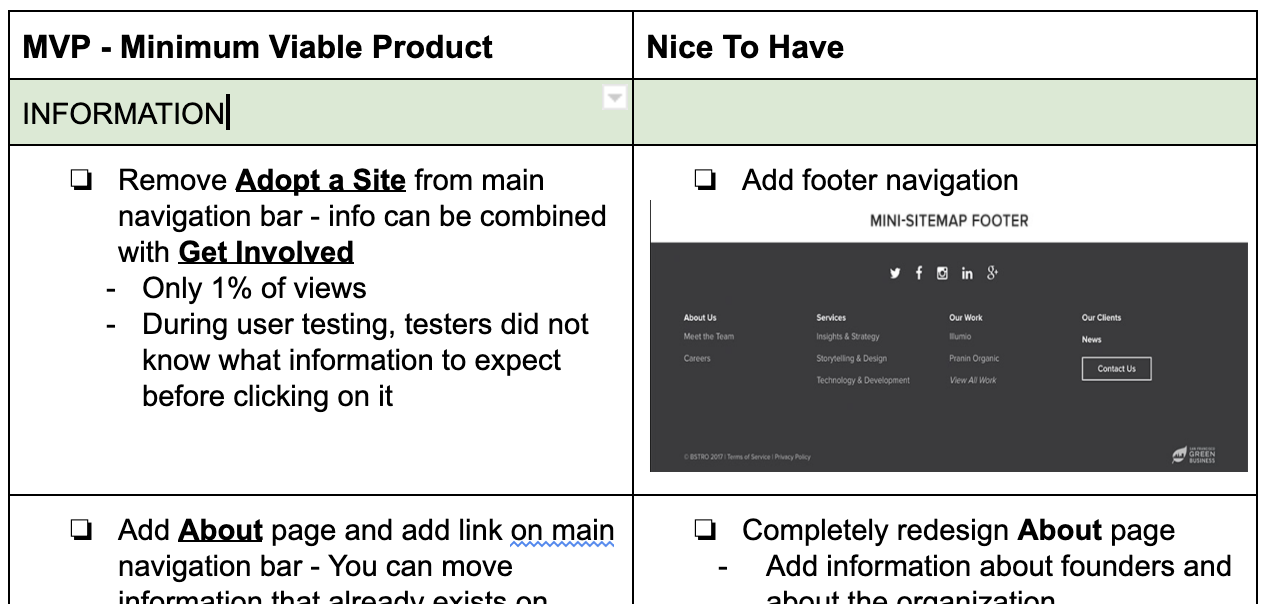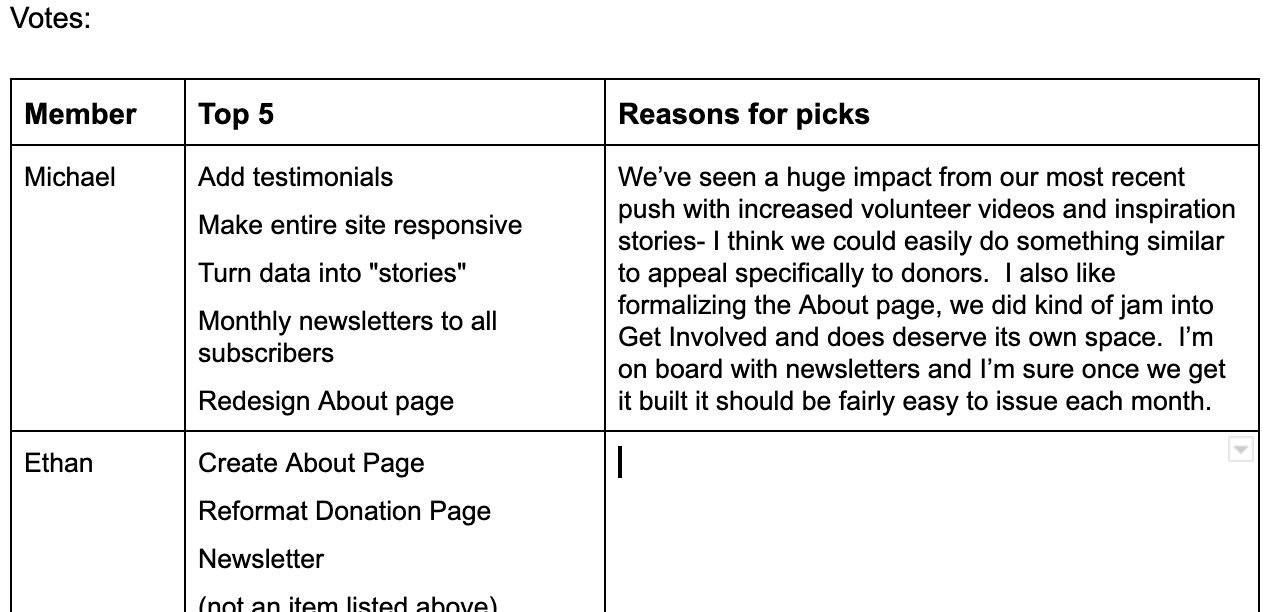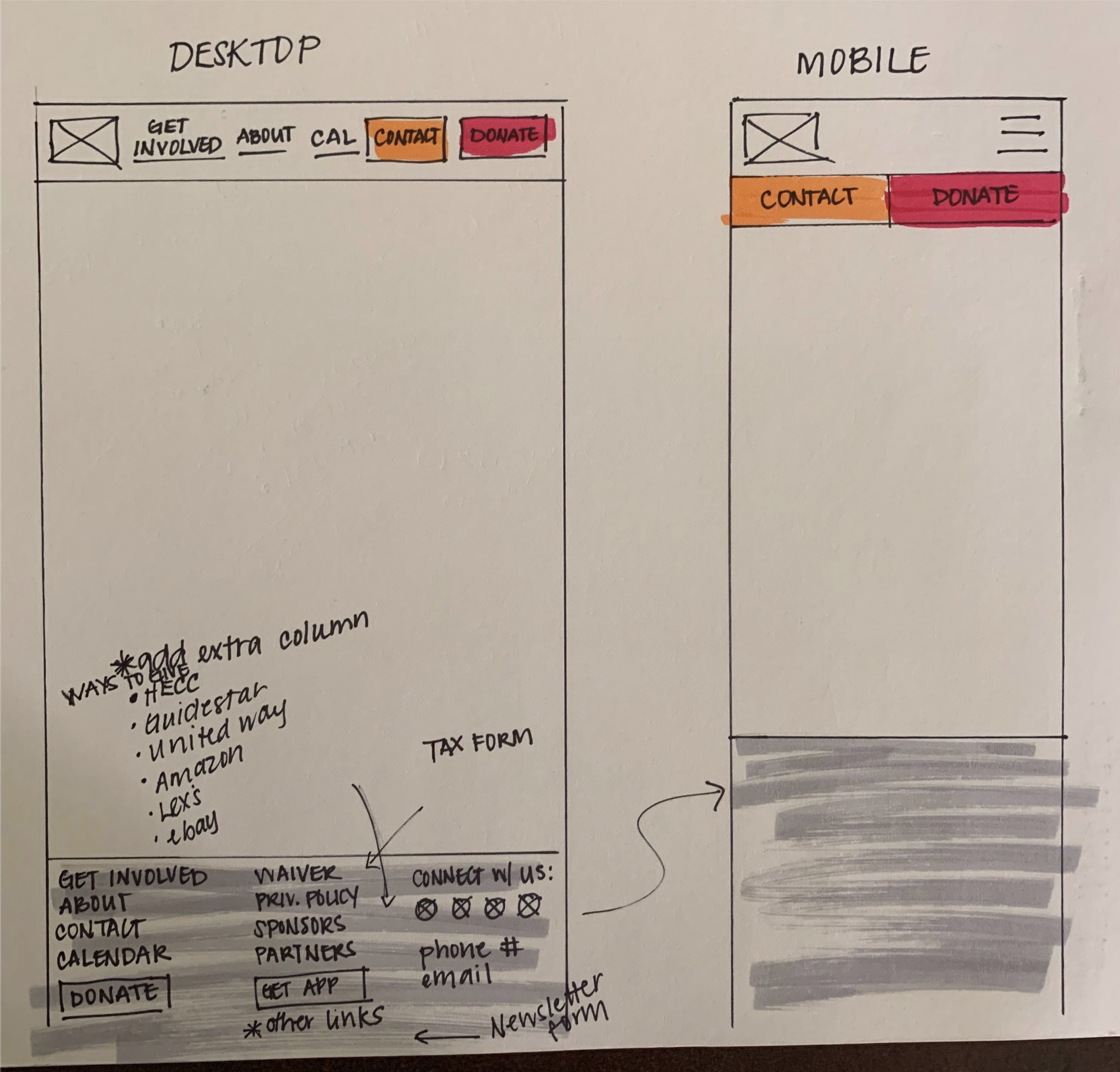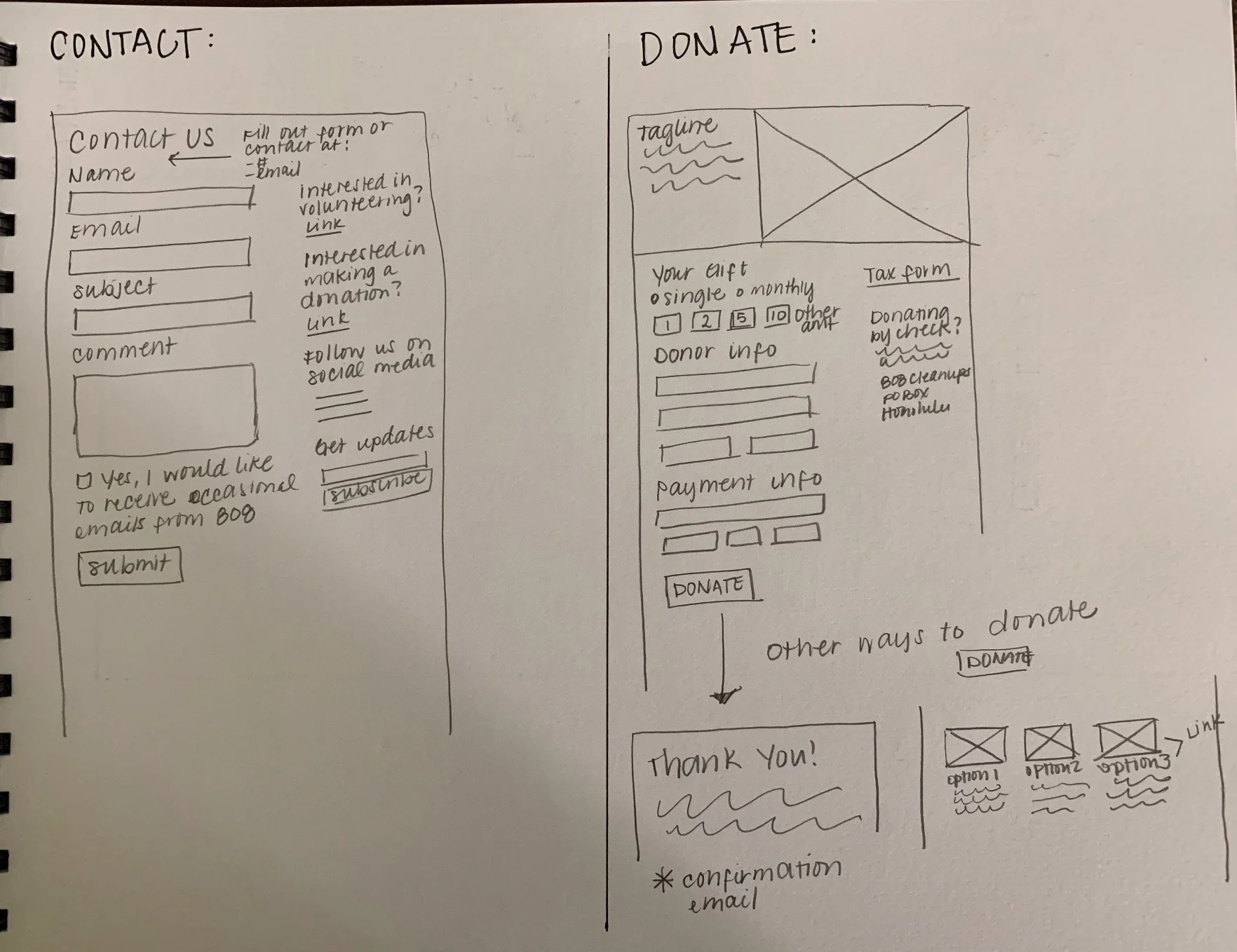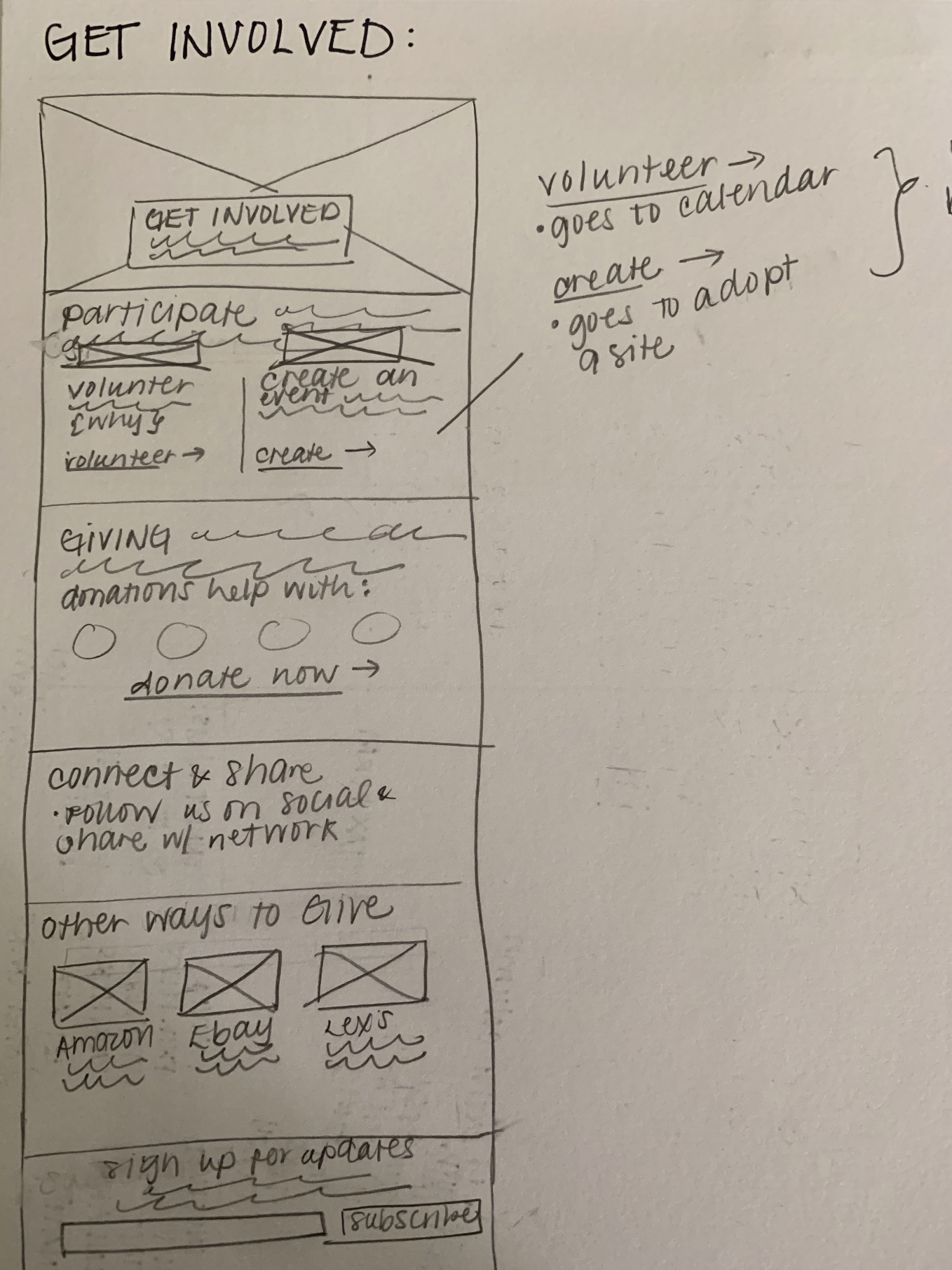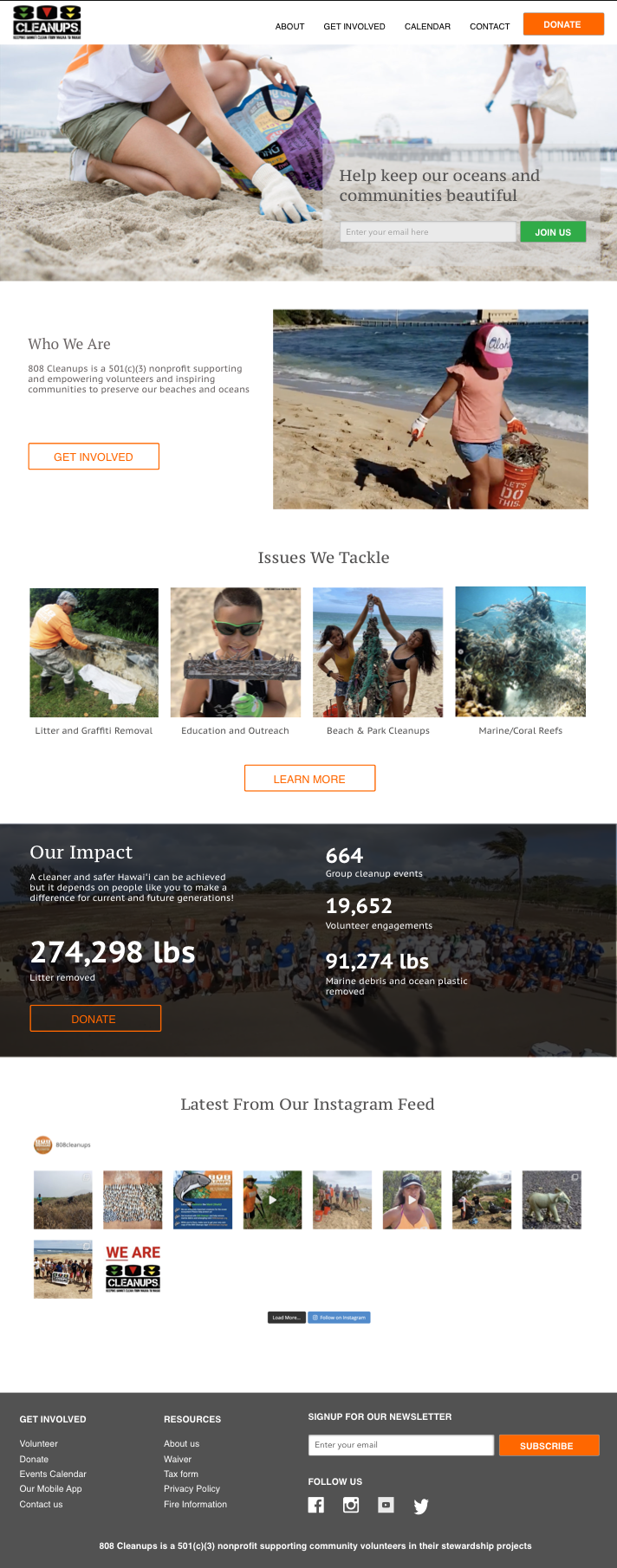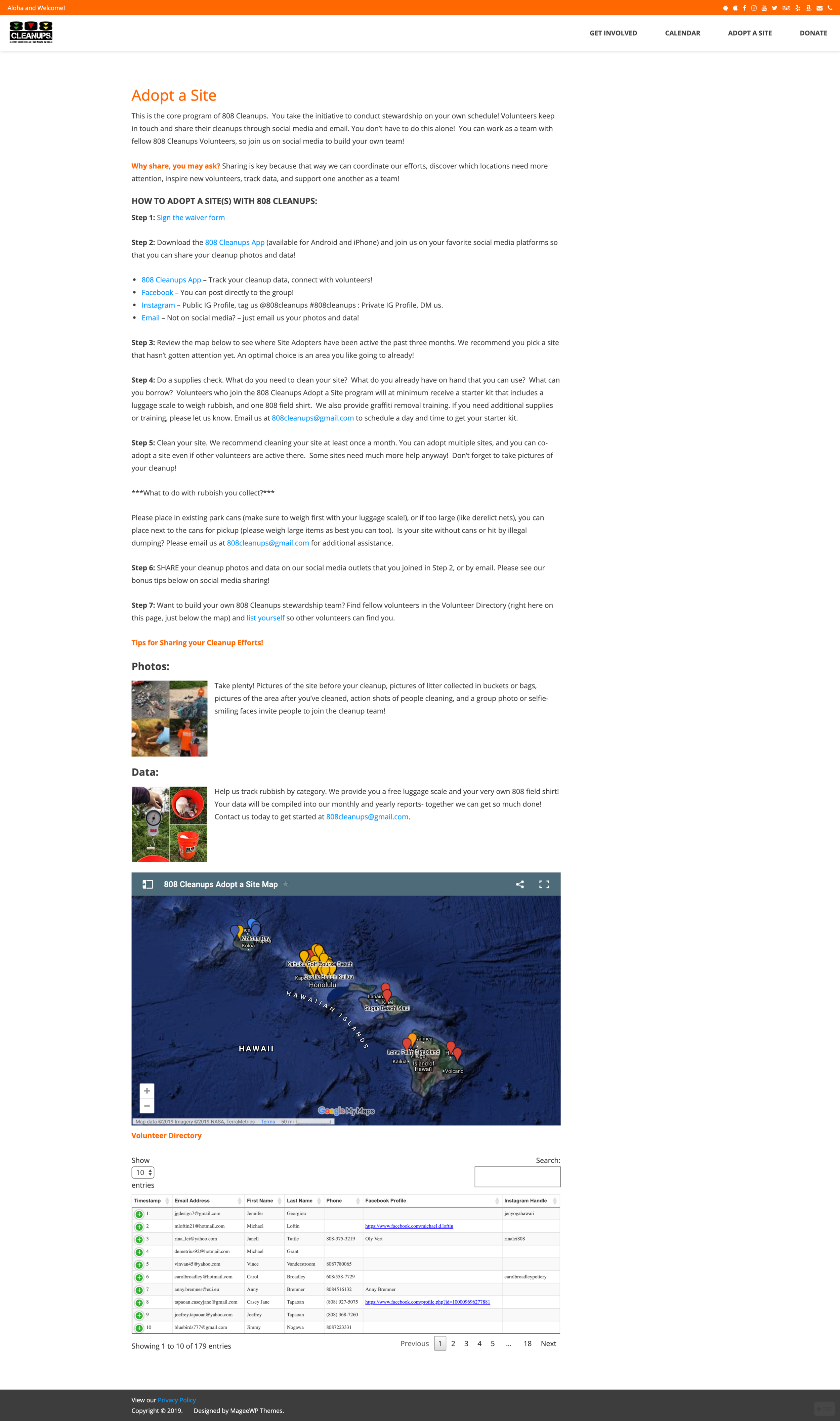
How might we make donation a habit?
OVERVIEW
An environmental nonprofit has been successfully getting volunteers to help organize cleanup events across Hawaii for the last 5 years. As volunteers increase, so does the need for funding to provide them with supplies. I was asked to evaluate their current website and help get more individual donations.
ROLE
UX Researcher
UX Designer
DURATION
3 weeks
June 2019
TEAM
UX Designer (me)
Web Designer/Dev
App/Web Developer
Executive Director
Director of Community Outreach
DISCOVER
What i know vs. what i don’t know
Pollution has been a long-time issue, but as awareness and demand for action increases, even companies like Starbucks have made public efforts to reduce their waste. I wanted to know what motivates people to take action or donate to different causes.
RESEARCH
Stakeholders
Prior to all other research, I asked the Executive Director about their goals, current users, target users, and other organizational info.
Data
The Executive Director provided analytics data about their current website, previous newsletter results, and demographics of their Facebook group members.
Users
To learn about target donors, I read well-funded studies about donation behavior. I also recruited volunteers to participate in a think-aloud protocol to get feedback on the current site.
INSIGHTS
Donors want to feel appreciated and know WHAT they’ve helped achieve with their contributions
People are more likely to donate when the process is fast, easy, and can be done on their phones
Stories are more effective than data in convincing people to take action
Newsletters are a very effective way to increase monthly donations by up to 1000%
Short-term vs. long-term success
In the short-term, we want to make sure that more people visit the donate page and that it’s easy to find from everywhere on the site. We also want to make the donation form responsive and easier to fill out.
We will attempt to achieve longer-term success by creating an emotional investment through compelling images and stories, targeted newsletters, and requests to share with friends and family.
Design process
MY APPROACH
CREATE A HABIT OF REGULAR DONATION
According to research, regular donations from fewer donors result in higher total donations compared to having more one-time donors. Retaining regular donors also requires less effort compared to getting new donors.
THE HABIT LOOP: The key to successful, long-term habits
CUE
Receive a newsletter
>>
Routine
Making a donation
>>
Reward
Feel like a hero!
repeat!
Until it becomes automatic
BUT in order to get repeat donations, we first have to be able to convince people to do it once…
IDEATION
A list of requirements (MVP) were created after doing card sorting exercises based on research, data, and user tests
Prioritization exercise
Stakeholders were asked to list their top 5 “nice to have” features based on user value vs. feasibility
TOP 5:
Add About page
Monthly newsletters vs. quarterly (all subscribers)
Make entire site responsive
Redesign Donate page
Turn data (numbers) about their results/impact into stories
**I decided to add the footer nav to their MVP because they had many important pages (waivers, fire info, etc) that were difficult to find
“Feature shopping” exercise
Stakeholder votes
Sketches
Header and footer design ideas
Desktop design for contact and donate pages
Sketch for ‘Get Involved’ page
REDESIGN
BEFORE & AFTER
HOMEPAGE
ADOPT A SITE PAGE
DONATE PAGE
VOLUNTEER CALENDAR
Conclusion
Next steps
Redesign the current website and measure any changes in page views, button clicks, and donations
Encourage newsletter signups through the website and social media to test effectiveness on donation amounts
Continue to get feedback and iterate on design and copy through A/B testing
Reflections
This was the first UX project that I worked on from start to finish with actual clients so my goal was to do it as completely and correctly as possible. The hardest part for me at times was remembering that it was an iterative process and that I didn’t need to get each step perfect on the first try. I also learned that the client appreciated constant feedback and involvement even if I didn’t have any significant updates every time.
What I would do differently
Being a nonprofit with limited resources, I tried to focus on changes that I thought could be implemented quickly. Given more time and financial/technical resources, I would have liked to do more user testing, surveys, and interviews to get feedback on effective images and stories on the website. I would have also liked to spend more time on the actual newsletter portion and its impact on the number of people who donate or share with their networks.
